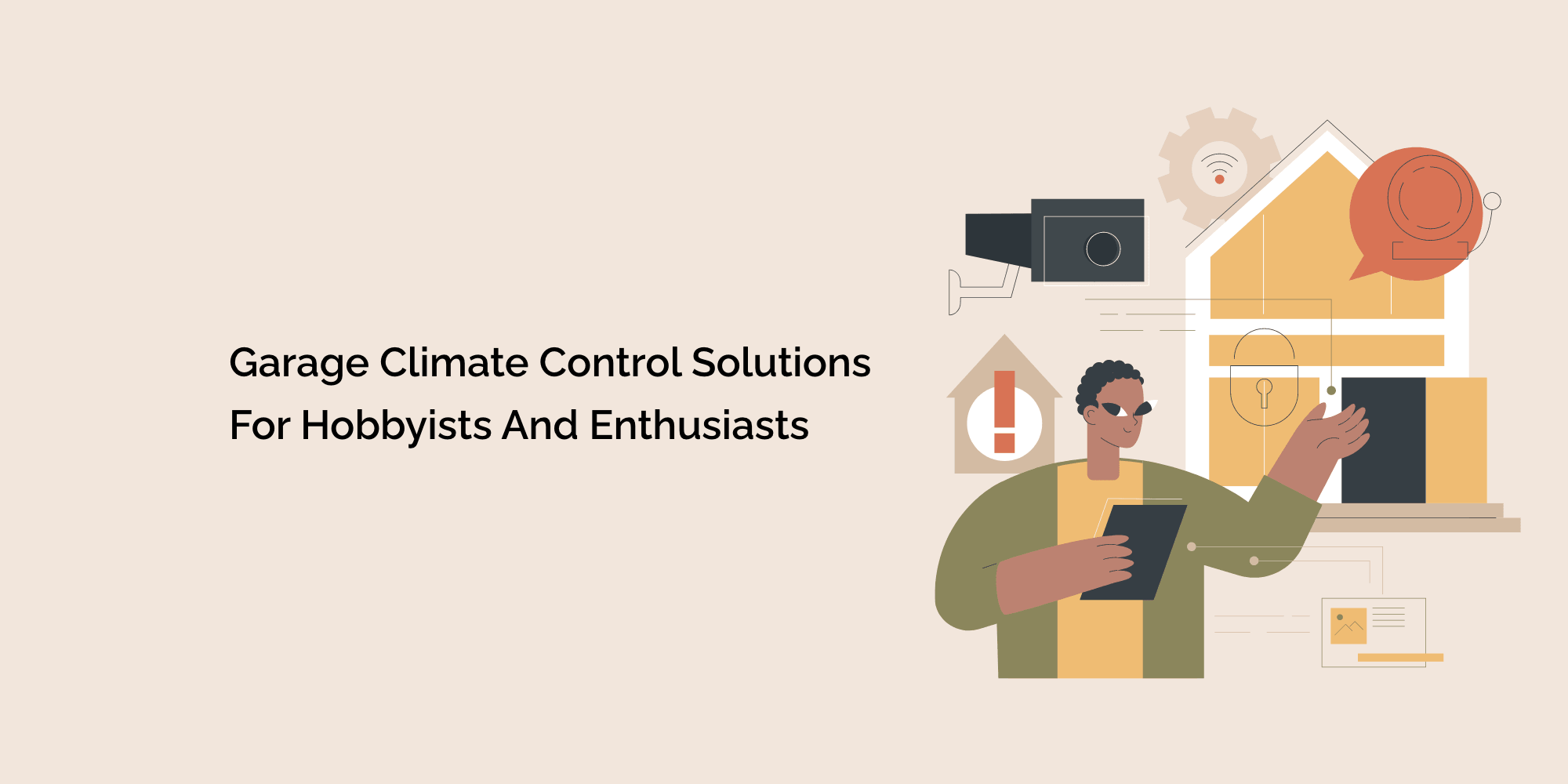For hobbyists and enthusiasts, the garage serves as a haven for pursuing their passions, whether it's woodworking, automotive tinkering, or artistic endeavors. However, maintaining an optimal climate within the garage is essential to ensure the longevity of tools, equipment, and materials, as well as creating a comfortable working environment.
In this blog, we will explore various garage climate control solutions that can benefit hobbyists and enthusiasts. From temperature regulation to humidity management, we will provide practical tips and insights to help you transform your garage into an ideal space for pursuing your hobbies.
Understanding the Importance of Garage Climate Control
a) Temperature considerations:
Extreme temperatures can affect the performance and lifespan of tools, electronics, and materials. Excessive heat can warp wood, damage paints, and affect the accuracy of measurement tools. Conversely, extreme cold can make materials brittle and impact the functionality of certain equipment.
b) Humidity management:
High humidity levels can lead to rust, mold growth, and deterioration of materials, while excessively dry conditions can cause wood to crack and electronic components to malfunction.
c) Comfort and productivity:
A well-regulated garage climate promotes comfort, allowing you to work efficiently and enjoy your hobbies without discomfort from extreme heat, cold, or humidity.
Understanding these factors underscores the importance of implementing effective climate control solutions in your garage.
Temperature Regulation Solutions
a) Insulation:
Proper insulation helps maintain a consistent temperature in your garage. Insulate the walls, ceiling, and garage door to reduce heat transfer and minimize temperature fluctuations.
b) Ventilation:
Adequate ventilation is crucial for temperature control. Install vents or exhaust fans to improve airflow and regulate temperature. Consider using a venting system with a thermostat to automatically control airflow based on temperature.
c) Air conditioning and heating:
Depending on your climate, installing an air conditioning unit or a space heater can provide precise temperature control. This is especially beneficial for enthusiasts working with temperature-sensitive materials or equipment.
d) Radiant floor heating:
Radiant floor heating systems offer efficient and comfortable heating solutions. They provide consistent heat from the ground up, ensuring a warm working environment even during cold weather.
Humidity Management Solutions
a) Dehumidifiers:
Use a dehumidifier to remove excess moisture from the air. This is particularly important for hobbies that involve woodworking, as it helps prevent warping, cracking, and other moisture-related issues.
b) Proper ventilation:
Ensure adequate ventilation in your garage to reduce humidity levels. Use exhaust fans or open windows and doors to allow moisture to escape and fresh air to circulate.
c) Moisture-absorbing materials:
Place moisture-absorbing materials such as desiccant packs or silica gel near sensitive equipment or materials to help control humidity levels.
d) Seal cracks and gaps:
Inspect your garage for any cracks or gaps that may allow moisture to enter. Seal them with weatherstripping or caulk to create a more controlled environment.
Additional Tips for Garage Climate Control
a) Temperature and humidity monitoring:
Use digital thermometers and hygrometers to monitor temperature and humidity levels regularly. This will help you identify any fluctuations or issues that require attention.
b) Storage organization:
Properly store your tools, materials, and equipment to minimize exposure to temperature and humidity fluctuations. Utilize storage cabinets, shelves, and plastic bins to keep items protected and organized.
c) Routine maintenance:
Regularly maintain your climate control equipment, such as air conditioners, heaters, and dehumidifiers. Clean or replace filters, check for leaks, and schedule professional maintenance to ensure their optimal functioning.
d) Seal windows and doors:
Ensure that windows and doors are properly sealed to prevent drafts and heat loss, as well as to keep humidity levels in check. Use weatherstripping or door sweeps to seal any gaps.
e) Use reflective coatings:
Apply reflective coatings to the garage door and windows to minimize heat absorption from sunlight. This can help maintain a more comfortable temperature inside the garage.
f) Consider a climate-controlled cabinet:
For valuable or sensitive equipment and materials, invest in a climate-controlled cabinet. These cabinets provide a controlled environment with temperature and humidity regulation, ensuring optimal conditions for storage.
Conclusion
Creating an ideal climate within your garage is crucial for hobbyists and enthusiasts to pursue their passions effectively. By implementing garage climate control solutions, you can protect your tools, materials, and equipment, while also creating a comfortable working environment. Temperature regulation through insulation, ventilation, and the use of heating or cooling systems ensures that extreme temperatures do not impact your projects.
Effective humidity management using dehumidifiers, ventilation, and moisture-absorbing materials safeguards against rust, mold, and material deterioration. Additionally, regular monitoring, proper storage organization, and routine maintenance of climate control equipment are essential for long-term effectiveness.
Investing in garage climate control not only preserves your tools and materials but also enhances your overall hobby experience. By creating a comfortable and controlled environment, you can work efficiently, improve productivity, and enjoy your hobbies without the limitations of extreme temperatures or humidity. Evaluate your specific needs, research suitable solutions, and implement the appropriate climate control measures to transform your garage into an ideal space for your creative pursuits.








